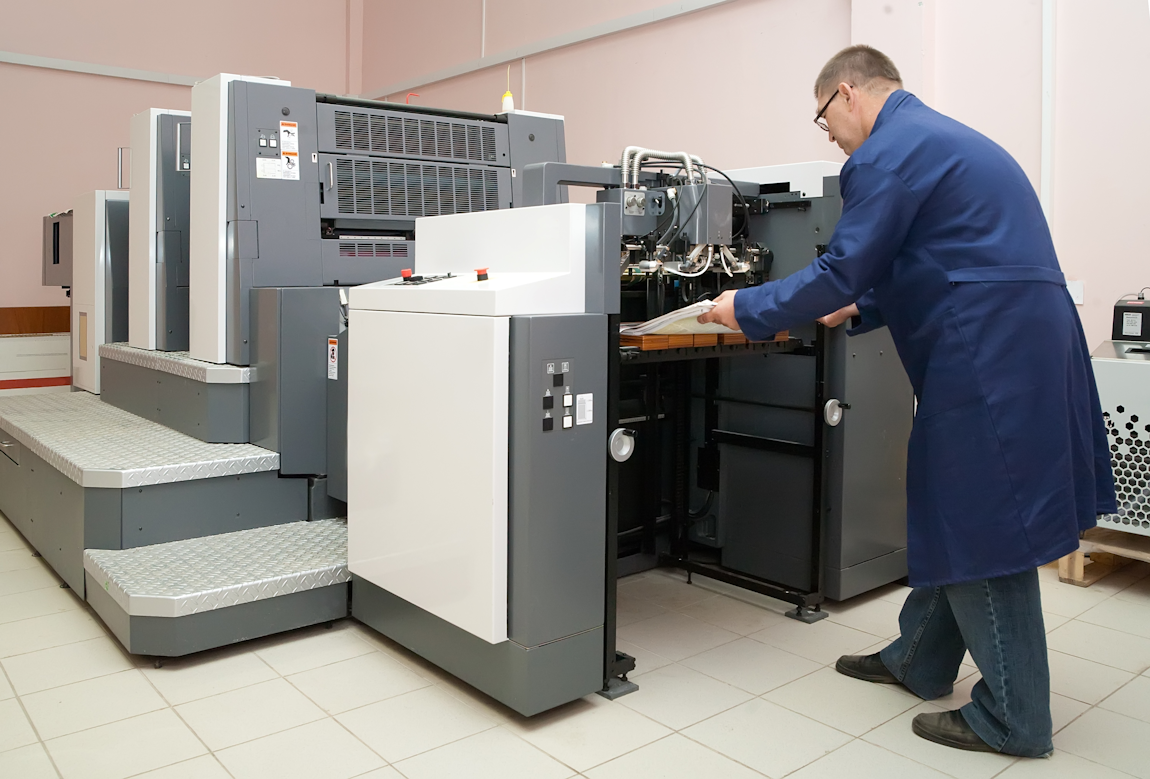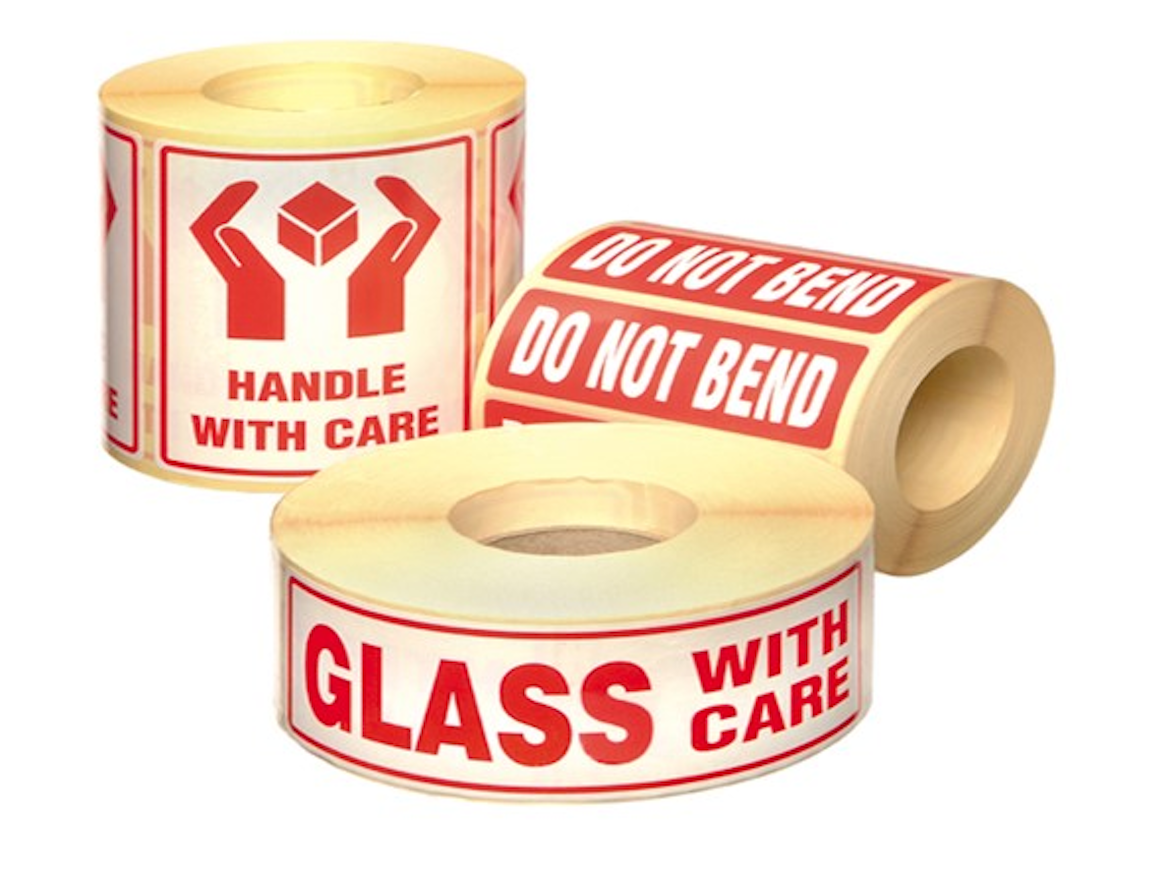But do you know what they are and the different benefits and drawbacks that they bring? In this article, we will be discovering the three most popular types of print available for packaging as well as distinguishing their differences.
The benefits and drawbacks of different types of printing
Printing has been around since before 220AD, with the oldest type of printing technique being ‘woodcut’ that involved carving an image onto a wooden surface. Printing has evolved since then with a wide range of advanced printing methods now available to us right at our fingertips.

Offset Lithography printing
Let’s start with one of the most popular methods of mass-production printing. Offset printing is where your artwork is transferred to metal plates and then placed (offset) onto rollers or rubber blankets before going onto the print media.
Offset Lithography is most often used for rough-surfaced media such as wood and canvas. However, due to it being so versatile, it can also be used for other packaging material, including paper.
The benefits:
Offset lithography is perfect for producing high quality images as it can be used on both small and high-volume print jobs. But what are the other benefits?
- It is versatile: the print media can be any type of paper you want and can be printed on any flat surface.
- Long-term usability: the plates life is extended due to the print media not coming into contact with them.
- Has great flexibility: rollers and rubber plates are flexible, which means offset lithography can be used on any media with rough surfaces as well.
The drawbacks:
Even though Offset lithography is great for producing high quality images. there are two main drawbacks:
- It is not cost-effective: because of the time and costs required to set up, offset printing is not cost effective when it comes to smaller amounts. Usually, it is only used when needing very large volumes of print.
- Not environmentally friendly: by using traditional offset printing methods, the only option is to print in bulk, this means there can be more waste leftover.
Flexography printing
Most often used for packaging and labels or anything with continuous patterns, flexography is the modern version of letterpress printing and is usually used for printing on uneven surfaces.
This printing process involves flexible photopolymer printing plates wrapped around rotating cylinders on a web press. These inked plates have a raised image of the content on them, so as they are rotated at high speeds, they transfer the image onto the print media.

The benefits:
Flexography is a popular choice of printing due to its high press speeds, and when used for medium to long prints, the advantages of flexography largely outweigh the disadvantages. The benefits of using this printing method are:
- Suitable for long runs: it can print on a huge range of media including plastic, cellophane, and metallic film.
- Ensured high-quality: produces high-quality results with its speed efficiency and has a quick production process.
- Very versatile: flexography uses a variety of ink types from water through to solvent and U.V curable inks, making it the most versatile process for almost any application.
- Low operational costs: ink and material costs are low compared to other printing methods, with no special coatings required.
- Long-term machinery: flexographic machinery is robust, and its parts last a long time before needing replacing.
- Environmentally friendly: the use of water-based inks reduces the environmental impact and reduces the amount of toxins released into the atmosphere.
The drawbacks:
There are always some disadvantages to any printing method, but luckily for flexography there are not many. The few known drawbacks to flexography are:
- It can be complex: flexography printing equipment can be complicated. It has a number of integral systems and mechanical components which need a regular schedule of routine maintenance to avoid any expense on repairs.
- Plates can be expensive: the most important part are the printing plates and if you are needing several colours, you will need to provide a plate for each.
- More time consuming: the flexography press can take awhile to set up and the more colours you have, the longer it will be.
Flexography printing may not provide as simple of a printing process, but it still offers the same flexibility, variety and speed that makes it worthwhile.
Digital Printing
Digital printing is a modern method covering a range of techniques including inkjet and laser printing. It is most often used for corrugated boxes, labels, posters, menus, and newsletters. The digital printing process includes images being sent directly to the printer using digital files like PDFs. This means printing plates are not needed and so can save time and money if you are not printing large numbers.
Printing on corrugated cardboard boxes has become increasingly more popular since 2013. Unlike flexography that is suitable for simplified graphics and larger quantities, digital printing allows you to produce high-quality, photo-realistic images and print them directly onto your box.

The benefits:
Digital printing can be great for several design purposes, including personalised packaging. The demand for personalised packaging is always growing, this means that digital printing and inkjet markets will experience exponential growth.
There are many benefits of using digital printing methods:
- Fast and efficient: digital printing has a quick turnaround, allowing business to print on demand.
- Cost effective: digital printing can be cost effective as plates are not needed, and you can still produce high-quality prints similar to bigger-scale options.
- Greater flexibility: means that frequent changes can be made to your printing material if needed.
- Easy customization: digital printing can be used to customize your packaging and make it stand out from the crowd.

The drawbacks:
Although, digital printing has become widely popular to meet the demand of lower quantities and lower costs, it still cannot quite meet the standards of offset printing in terms of quality. Some of the main drawbacks to digital printing are:
- Unable to colour match: digital printing still cannot match the colour quality of traditional offset printers. This is because digital printers use a four-colour process, while offset printers can use PMS and inks to deliver accuracy.
- Cracks can appear: as digital printers are not fully absorbed into the paper; cracks can appear in the colour when the piece is folded.
- Less material options: although digital printing is catching offset printing presses up in terms of what they can print on, digital printing still does not offer the wide range of paper, ink and finish options that offset printing can.
- More expensive in higher quantity print runs: if you have a higher quantity of print needed, the prices of offset printing are usually more cost-effective than digital.
What is the best type of printing for packaging?
All the different types of printing can contribute to help any business thrive, whether it be to create versatile material, being able to print on demand, or to just keep up with the increasing demand of personalised packaging.
But which is the best for packaging? If you are printing on corrugated boxes then we would recommend the Digital Printing method as it allows you to produce high-quality images and print them directly onto the box, unlike flexography that is more suitable for simplified graphics and larger quantities.
If you would like to find out more about printing and how Swiftpak can help your business, contact our packaging experts today.
Top Image source: https://www.freepik.com/photos/people'>People photo created by bearfotos - www.freepik.com